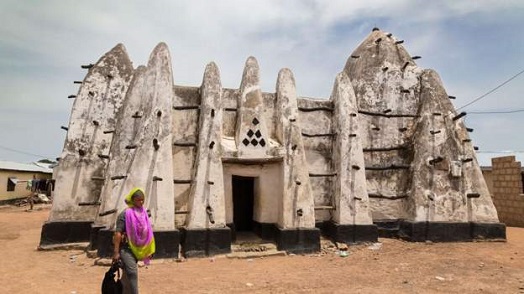A historic mosque in Bole, a town in north-west Ghana, has partially collapsed following heavy rains.
The mud roof of the Bole Mosque crumbled after years of neglect and termite infestations.
Museum officials in Ghana said the infestation of termites weakened the wooden rafters holding the structure in place, causing it to give way after a heavy downpour.
Made mostly of mud, the religious site was built between the late 19th and early 20th Centuries.
Officials said the damaged mosque could be repaired with the assistance of local people who were familiar with its architecture and build.
Ghanaian museum authorities have advised residents not to raze the remnants of the mosque in order to build a new one.
Alongside neglect and termites, the collapse of the mosque has also been blamed on the use of modern materials like cement during repairs and maintenance.
The Bole Mosque boasts a distinctive architectural design, akin to the renowned Larabanga Mosque in Tamale.
It consists of mud on frameworks of wooden poles. Short lengths of protruding poles are buried into buttresses, giving the mosque its unique appearance.
The building is an example of neo-Sudanese influences, which led to the formation of predominately Islamic communities in northern Ghana, especially in the Wala and Gonja states.
There are similar mud mosques in neighbouring West African countries, notably Mali.
BBC





